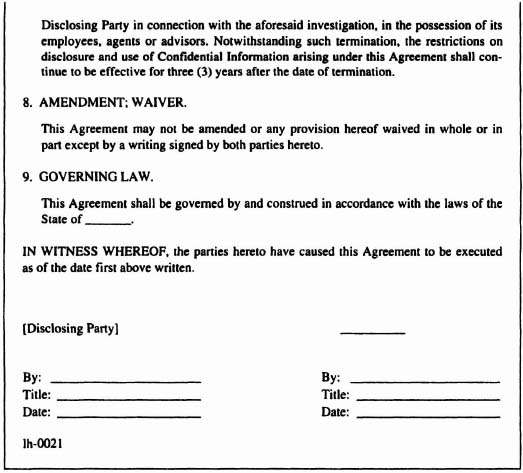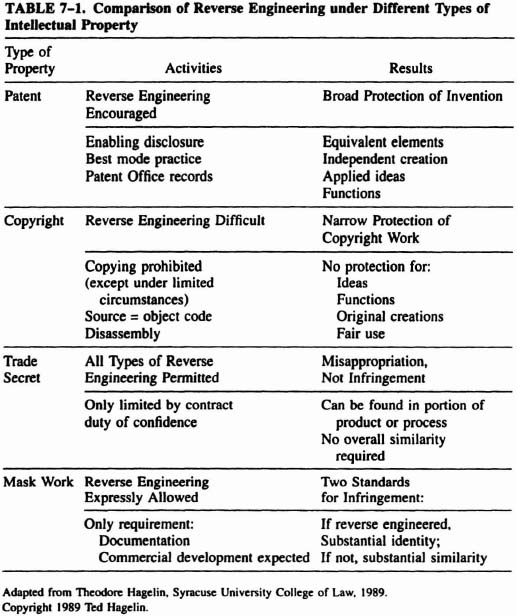7.5 INTELLECTUAL PROPERTY
Intellectual property refers to a body of rights relating to works of authorship, inventions, trademarks, masks, designs, and trade secrets. There are two broad areas: industrial property (inventions, trademarks, industrial design, and protection of trade secrets) and copyrights.
Society at large acknowledges that without some form of protection, invention will be stifled. Legal frameworks for the protection of intellectual property across a wide range of creative work from art to engineering have been established. Naturally laws vary from country to country, and while this treatment is written from a U.S. perspective, the broad principles are similar. However, it is important to investigate the laws of a particular country to ensure proper analysis of the legal safeguards.
In the context of FPGAs, both novel FPGA applications as well as novel forms of architecture or device engineering represent intellectual property, and design engineers as well as corporations need to protect their investment of time, effort and resources.
7.5.1 Patents
A patent allows its owner to control the exploitation of an invention, either directly or by licensing to others, for 17 years from the time a patent is awarded. (In many other countries a patent is offered for a period of 20 years from the time of application for the patent.) A patentable invention must have some tangible implementation, which now includes algorithms as implemented in software and microprograms, as well as architecture and circuit techniques.
7.5.2 Copyrights
In the United States a copyright gives the owner exclusive right to reproduce the work, prepare derivative works, distribute copies, or perform or display the work publicly. Copyright protection originated from the printed word, but now includes artwork such as layouts for integrated circuits.
7.5.3 The Semiconductor Chip Protection Act of 1984
The Semiconductor Chip Protection Act of 1984 provides a special method of legal protection for original mask works and allows mask sets for ICs to be deposited with the Library of Congress. Protection is provided for a term of 10 years, subject to registration by the Copyright Office.
Prior to the Act, there were several cases in which ICs appear to have been replicated by stripping off the layers of an existing IC by selective chemical processing, using microphotography to create new masks and fabricating the rival product. In some cases, the “new” masks included portions of company symbols (“logos”) that were irrelevant to the functioning of the original circuit! The Semiconductor Chip Protection Act provides a useful deterrent to the copyist.
7.5.4 Trade Secrets
Trade secret legislation allows an employer, partners, or parties to any business relationship to prevent disclosure by a private contract. Trade secrets can protect inventions, ideas, principles, formulas, and functions, within the provisions of individual contracts (see the model nondisclosure agreement, Figure 7–4).
7.5.5 Reverse Engineering
The U.S. Supreme Court defines reverse engineering as:
Starting with a known product and working backwards to divine the process which aided in its development or manufacture.
When is reverse engineering legitimate and when is it not? (See Table 7–1.) First, the law makes a clear distinction between copying and the application of intellectual effort in discovery. The different forms of protection vary in their attitude to reverse engineering. With patent law, the basic concept encourages reverse engineering by its extensive disclosure requirements. It is legitimate to deconstruct a patented article, although it is generally wrong to construct another copy identical to it. Since a patent is broader than the implementation and protects the underlying ideas, principles, circuits, and so forth, to avoid a challenge of infringement any new product must be substantially dissimilar.
Copyright protection covers more than matching appearance, particularly for IC maskworks. Reverse engineering is permitted for the purposes of teaching and research, which are defined as “fair use,” but not a part of product development. It would be relatively straightforward to transform a given integrated circuit layout to an alternative realization with an identical underlying circuit, but physically different in appearance. For highly regular structures such as FPGAs, there may be a limited number of methods for producing a significant key element, such as a functional block.
How can one distinguish a copy from an independent creation? During the progress of legislation and court challenges, the concept of “clean-room technology” has emerged. This does not refer to the clean rooms required in IC manufacture, but to an organization arrangement in which the team producing a new product is isolated from details of the existing product. The team is provided with a functional specification of what is required and then develops its own implementation. The team must maintain a “paper trail” of abundant documentation to prove, if need be, that their creative work has required intellectual effort, including significant decision making along the path to the new product.
Copyright cannot protect against works that were genuinely created independently, or implement a basic idea, or require a set way of implementing some function. There have been several cases in which the introduction of some redundant feature has revealed a copyist rather than an independent inventor. For example, this occurred in a microcode instruction set that happened to contain the originator’s initials! Since maskwork legislation specifically permits reverse engineering and does not allow commonal-garden circuits to be protected, any infringement case in which reverse engineering had occurred, would have to be based on an extremely high degree of similarity for either the whole circuit or its major building blocks.
Figure 7–4. Model nondisclosure agreement.
Intellectual property legislation continues to evolve. At the same time, progress in semiconductor processing has increased the sophistication of fabrication technology. No longer is mere copying likely to provide circuits of adequate performance. Reverse engineering, however, has become easier with electron-beam inspection, which allows both the layout of a working chip to be examined and its internal workings probed as if with a high-performance oscilloscope.




